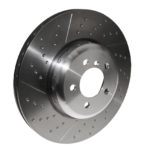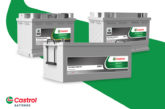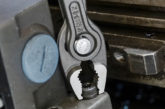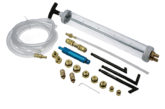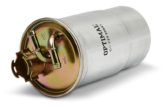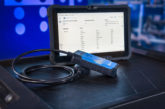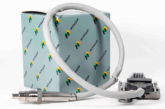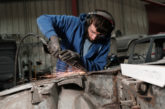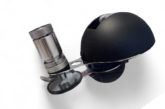TRW Aftermarket has introduced a range of high-performance two-piece (Semi-Compound) brake discs, designed to enhance safety and performance and extend endurance levels in heavier, more powerful vehicles.
This news was announced at this year’s Automechanika, Frankfurt. It further strengthens TRW’s position as a leading supplier of Corner Module (braking, steering & suspension) parts and systems by highlighting its commitment to offering a safer drive across all classes and weight of vehicle.
The initial range of Semi-Compound discs totals 24 part numbers and caters for various BMW models (Series 1, 2, 3, 4, 5, 6, 7, X5 and X6).
Semi-Compound brake discs consist of a corrosion resistant aluminium hub, joined to the grey cast iron friction ring by special steel pins. This construction allows the heat generated when braking to spread freely, preventing the disc from distorting due to thermal stress.
The use of aluminium also makes the part lighter. This reduces the unsprung mass which decreases fuel consumption and makes the vehicle smoother to drive and easier to handle.
Kevin Price, Marketing Manager, TRW Aftermarket explained: “As a global leader in automotive braking, we strive for the perfect solution for every class and weight of vehicle.
“As vehicles become ever faster and more powerful – as well as heavier due to the increasing number of additional mechanisms to aid safety and comfort – the braking system is subjected to greater and more exacting demands.”
With the consequences of brake discs overheating ranging from reduced performance through to total failure, intelligent thermal management is playing a key role in brake disc development.
Kevin continued: “We utilise a multitude of methods to dissipate heat in a deliberate and controlled way. This is vital to prevent the heat being transferred to other components or the brake fluid.
“By designing and developing a wide range of OE technologies, including braking systems, for the majority of vehicle manufacturers, we understand how each component within a system can affect the others. We therefore appreciate that for maximum benefit and performance, all parts have to be developed to work in harmony.”

